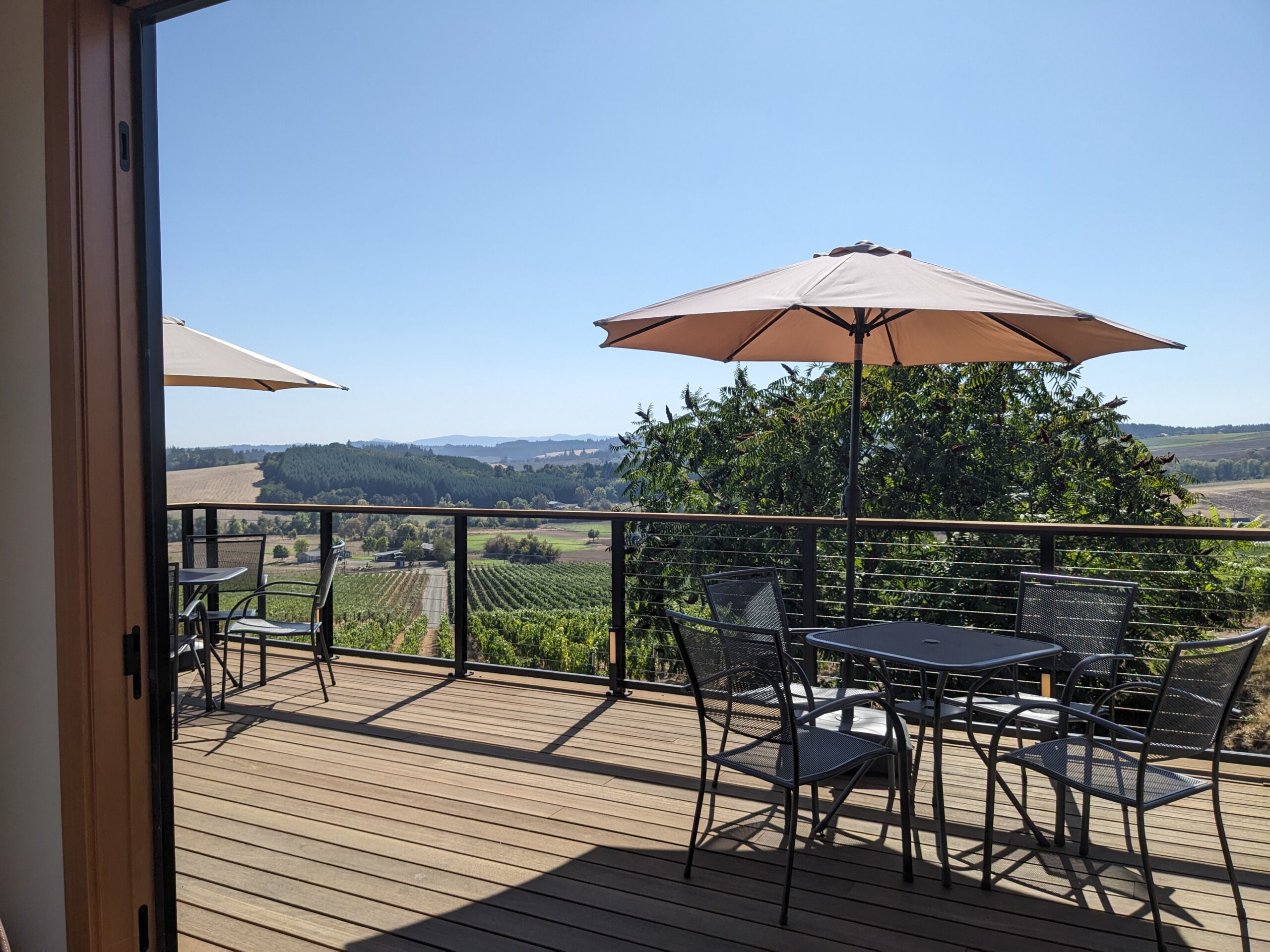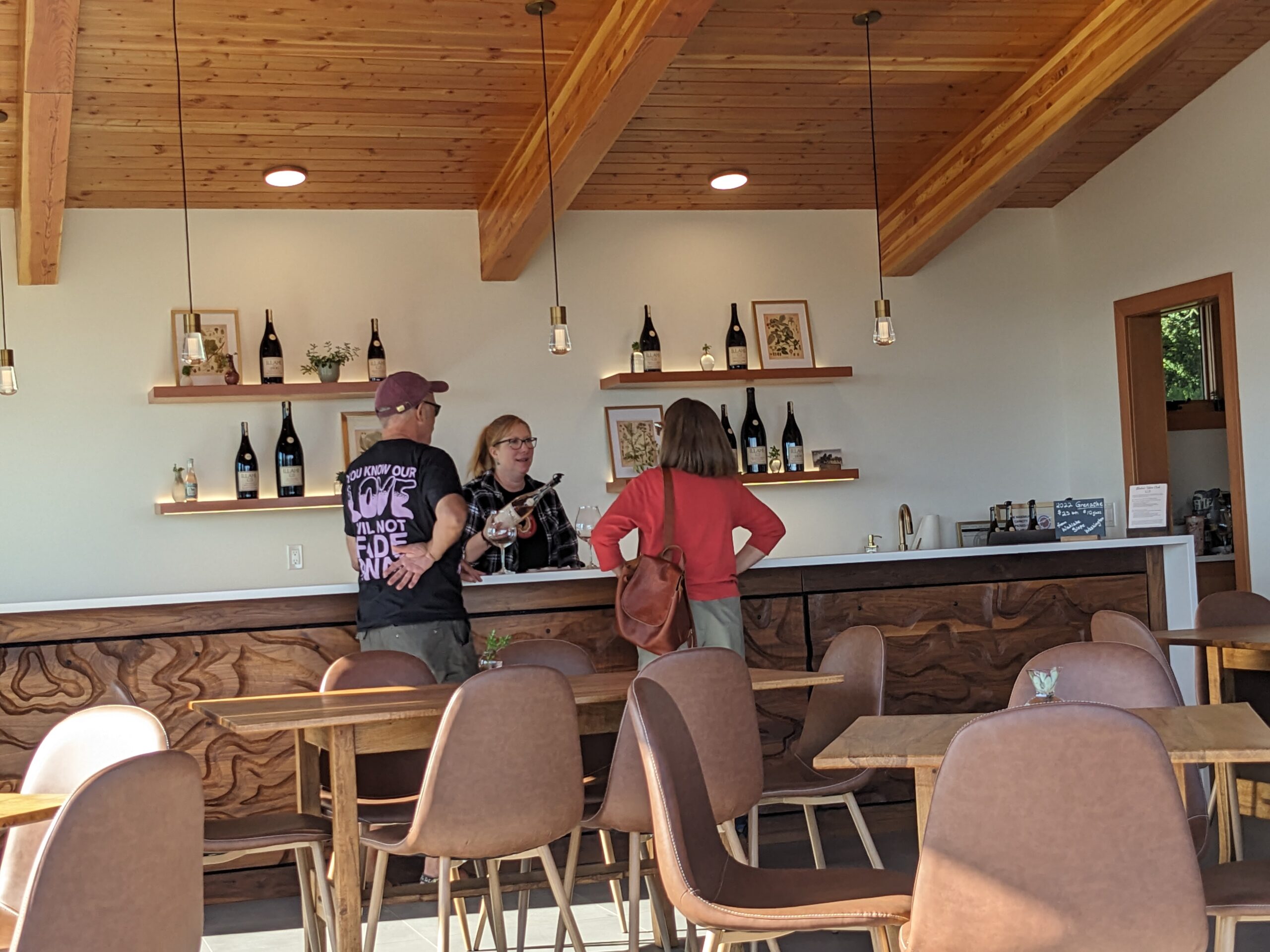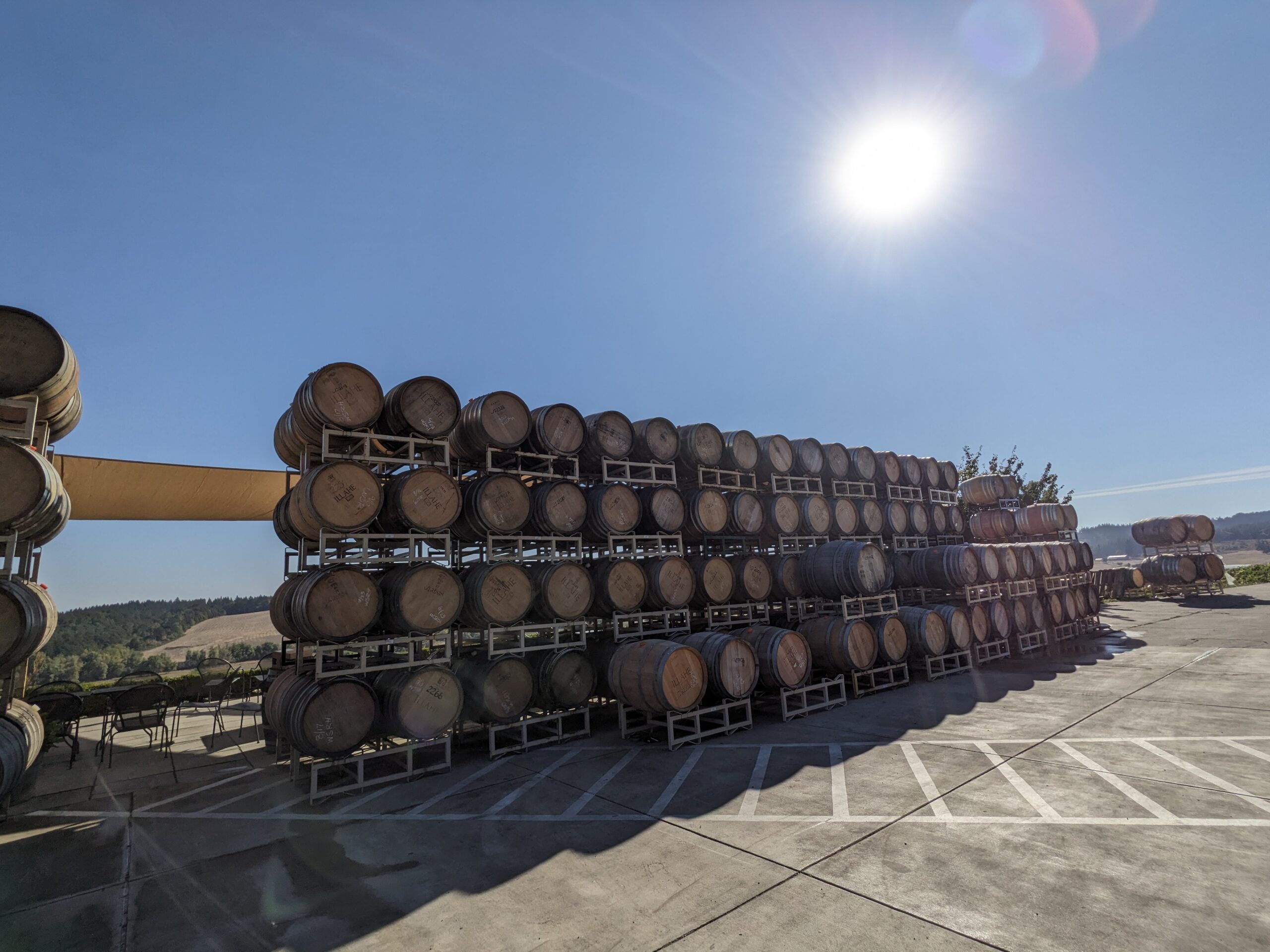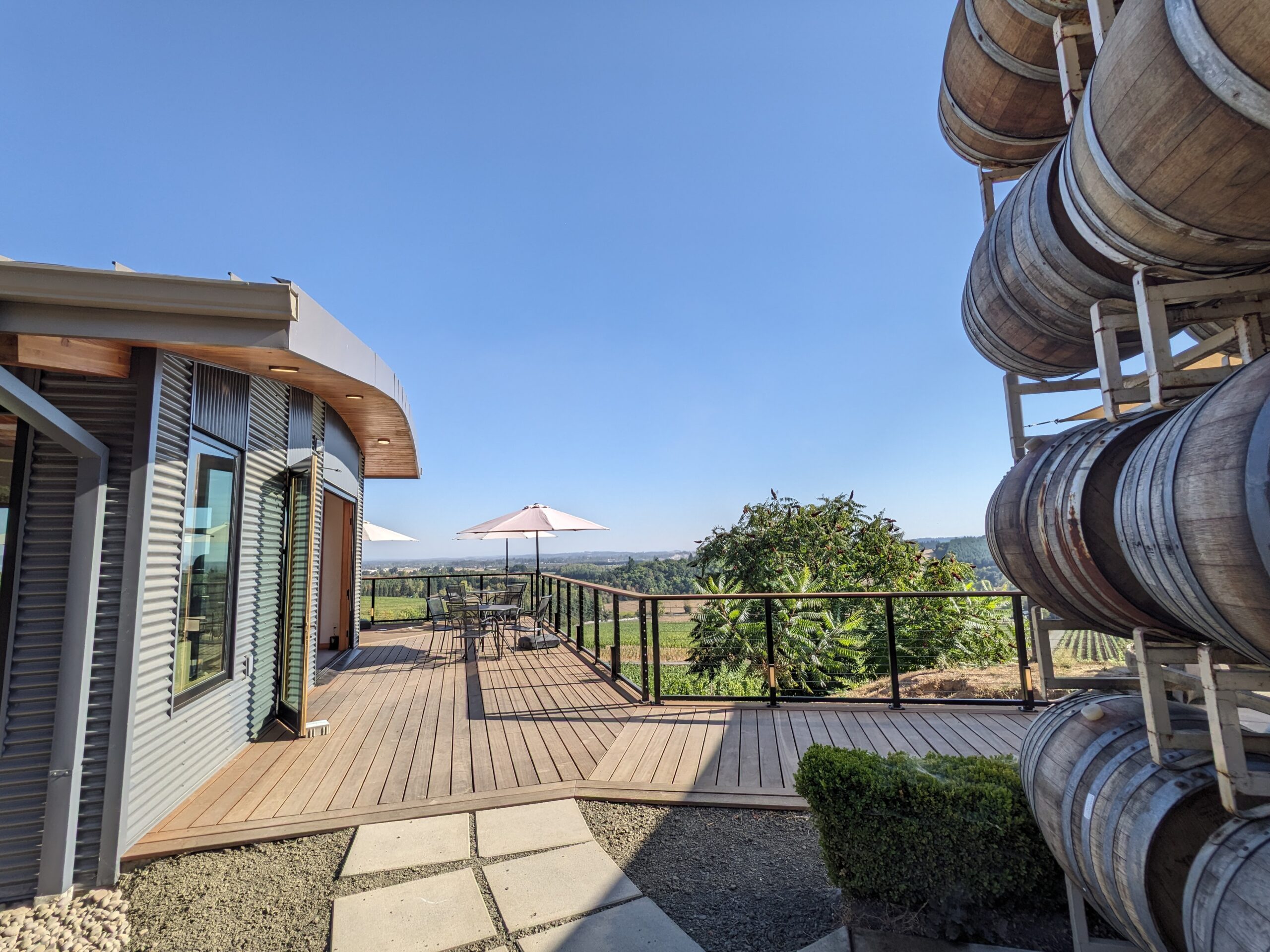 Illahe Vineyard’s winery sits on an 80-acre, south-facing slope that now has 60 acres planted in seven varieties, with the majority pinot noir. The winery is LIVE-certified and Salmon Safe, and their focus on sustainability means they use draft horses and bicycles in some of their wine-making processes, along with solar panels for energy. “The name ‘Illahe’ means ‘land, place, soil, earth,'” says sales manger Karen Richards. “Anything having to do with dirt. It comes from the Chinook Wawa, a tribal language that was spoken on the Columbia River. The word migrated here into the valley with the French trappers.”
Illahe Vineyard’s winery sits on an 80-acre, south-facing slope that now has 60 acres planted in seven varieties, with the majority pinot noir. The winery is LIVE-certified and Salmon Safe, and their focus on sustainability means they use draft horses and bicycles in some of their wine-making processes, along with solar panels for energy. “The name ‘Illahe’ means ‘land, place, soil, earth,'” says sales manger Karen Richards. “Anything having to do with dirt. It comes from the Chinook Wawa, a tribal language that was spoken on the Columbia River. The word migrated here into the valley with the French trappers.”

It’s been a slow progression for Illahe Vineyards to get to where it is now, but the results are worth it. Illahe’s first vintage was in 2006, from vines planted in 2001. “That was made off-site,” “’07’s was made in the pole barn that is now part of our shipping area. The winery was built in 2008 to produce between 6,000 and 10,000 cases. And now we regularly make 20,000 cases.” The team is utilizing their space to the utmost, and always shuffling items and equipment around to maximize space. On the day of our visit, their barrels were outside being cleaned and prepped for harvest. “One everything is pressed, it goes into the barrels and then will get moved again,” Richards says.

Illahe’s viognier, first made in 2007, is 100% made in stainless steel, and it has the clean, crisp taste to show for it. “It’s how we made it the first time because stainless steel is what we had available,” says Richards. “A neighbor had a contract on his fruit fall through, so he brought it to us, but it was the end of harvest for us and all of our barrels were full. It’s traditionally made like a Chardonnay where it’s fully oaked. It worked out so well in the stainless steel that our winemaker Brad never changed it.”

The Bon Sauvage Estate Pinot Noir got its name, meaning “good native,” when winemaker Brad Ford first used native fermentation, which is similar to a sourdough starter. “We harvest a little bit of fruit about three or four weeks earlier than the rest and allow the naturally occurring yeast on the skins to create a mother from the juice,” explains Richards. “You encourage it to multiply by putting it in a warm room and keep it going. Then after about three or four weeks the rest of the fruit comes in and then we inoculate it with its own yeast. This makes it very true to the vintage because what’s going out in the field is actually what’s in the bottle.”

The 2020 Illahe 1899 Estate Pinot Noir is named for 1899, the last year before the Industrial Revolution. The 300 cases of 1899 are made entirely by hand without electricity, including even delivering cases to the distributors down the river by boat! All of the fruit is hand-harvested and brought in by horse and wagon. It’s hand-sorted and then about a quarter of it is de-stemmed with a bicycle-powered de-stemmer. “The rest goes into three old world–style fermenters whole cluster, with the de-stemmed fruit on top,” explains Richards. “Then the crew will climb up ladders and do the ‘Lucille Ball dance.'” When the wine is ready, it is hand-bottled and hand-labeled. “There’s even a dollop of wax on top that is applied by hand,” says Richards. Afterwards, the cases are bicycled to the Willamette River where they are delivered by boat 96 miles downstream. “It takes us three days and two nights of camping,” says Richards. “It completes the entire circle and cycle of making a wine and getting it out into distribution with out electricity.”

Illahe Vineyards
Open Wednesday through Sunday
11am to 5pm, no appointment necessary
3275 Ballard Rd., Dallas
503-831-1248
www.illahevineyards.com


